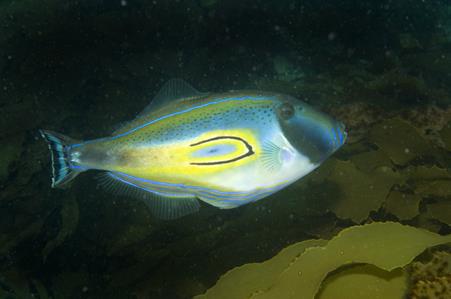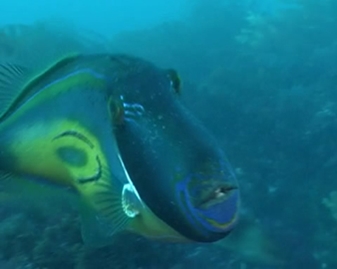General Description
Body elongate, compressed; adults with two pairs of curved spines on each side in front of the tail; two separate dorsal fins, the first a prominent spine with serrations along the rear edges, followed by a tiny second spine, enabling the large spine to be locked erect or depressed into a shallow groove along the back. Greenish above, yellowish below with a distinct black horse-shoe shaped marking behind the pectoral fin and blue lines along the bases of the dorsal and anal fins. Males much more brightly coloured than females; juveniles with indistinct markings on sides. To 60 cm.
Biology
A distinctly-marked leatherjacket seen on southern reefs.
Habitat
Rocky reefs in coastal waters, bays and harbours, in depths of 0-30 m.
Reefs
Distribution guide
Southern Australia. In western and central Victoria.
Species Group
Depth
Water Column
Max Size
60 cm
Diet
Carnivore
Harmful
Large dorsal spine could punture skin.
Commercial Species
No
Global Dispersal
Native to Australia
Identify
Conservation Status
- DSE Advisory List : Not listed
- EPBC Act 1999 : Not listed
- IUCN Red List : Least Concern






